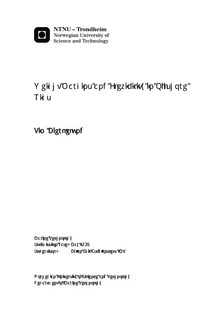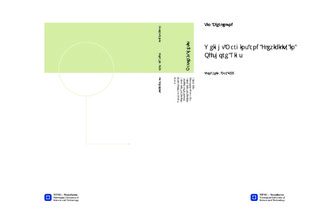| dc.contributor.advisor | Asbjørnslett, Bjørn Egil | nb_NO |
| dc.contributor.author | Bjerkelund, Tim | nb_NO |
| dc.date.accessioned | 2014-12-19T12:09:44Z | |
| dc.date.available | 2014-12-19T12:09:44Z | |
| dc.date.created | 2013-09-16 | nb_NO |
| dc.date.issued | 2013 | nb_NO |
| dc.identifier | 648701 | nb_NO |
| dc.identifier | ntnudaim:9175 | nb_NO |
| dc.identifier.uri | http://hdl.handle.net/11250/238551 | |
| dc.description.abstract | The subject of this paper is the use of weight margins in the design and fabrication of large offshore oilrigs. Margins are a way of increasing the freedom of choice of the designers and a method of increasing the overall flexibility and reducing risk of the project. The underlying justification of the use of margins is the riskiness of developing such a complex and technically advanced system as an oilrig.The problem evaluated is ?What consequences does the combination of practical project management and economic models yield in the evaluation of weight margins and flexibility in the design of large offshore floating units?? Furthermore, the theoretical background of project execution, practical experience and valuation methods are used to describe the subject in a more comprehensive manner.The project execution models used in Aker Solutions focus on progress and change management, essentially combining the iterative and linear project execution model. Failed projects can be distinguished from successful projects, not only by the uncertainty encountered, but the ability of the project team to utilize flexibility to counter this uncertainty. Weight margins are central in this regard, but not the only tool.Project analysis indicates that a large change in weight at a given stage yields an increased probability of large changes in the next stage. That is, change fosters further changes. Simulation, and the newsvendor model indicated that the current service level of Aker Solutions with respect to margins is close to optimum.The total value of options held by project management is significant, although seldom utilized. Project A is an example that yielded significant savings due to optionality utilization. The Contractor has a huge incentive to further develop and value these options in the future. | nb_NO |
| dc.language | eng | nb_NO |
| dc.publisher | Institutt for marin teknikk | nb_NO |
| dc.title | Weight Margins and Flexibility in Offshore Rigs | nb_NO |
| dc.type | Master thesis | nb_NO |
| dc.source.pagenumber | 122 | nb_NO |
| dc.contributor.department | Norges teknisk-naturvitenskapelige universitet, Fakultet for ingeniørvitenskap og teknologi, Institutt for marin teknikk | nb_NO |

